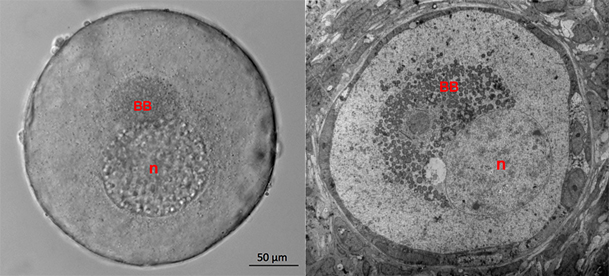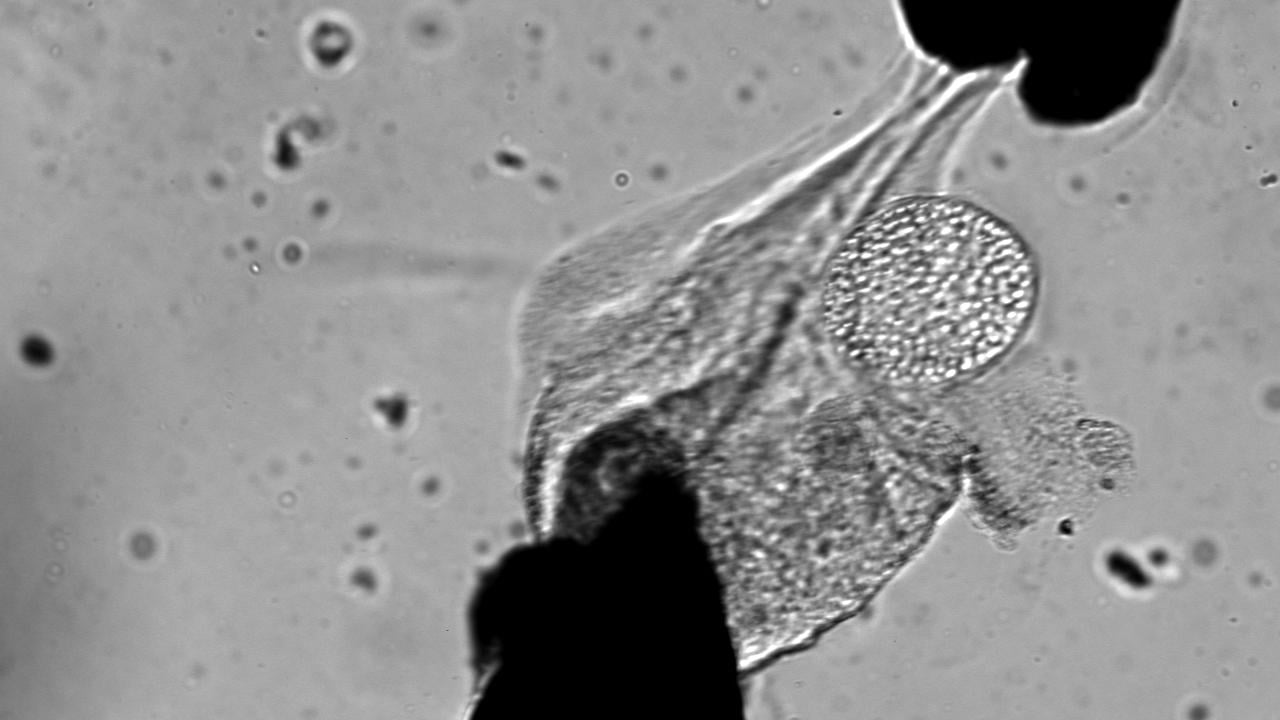
Researchers don’t yet know how immature egg cells, or oocytes, survive and protect their contents while they lie dormant for years in a woman’s ovaries, waiting for hormonal signals that ready them for fertilization.
Cell biologist Elvan Boke, a postdoctoral researcher in the Mitchison lab at Harvard Medical School, and colleagues suspect clues might lie in Balbiani bodies.
One of the most striking features of an oocyte, the Balbiani body is a membraneless ball of mitochondria, other organelles and proteins that breaks apart when the oocyte begins maturing into an egg, releasing the organelles into the cytoplasm. But Balbiani bodies have been slow to reveal their secrets.
“How do they form and disperse? How do they stay together without a membrane? What is their biological function? Are the organelles inside active or in a special state?” asked Boke.
Boke and colleagues at HMS and the Max Planck Institute of Molecular Cell Biology and Genetics in Dresden, Germany, report online in Cell on July 28 that in the oocytes of Xenopus frogs, which have long been used as a model organism for fertility research, the contents of Balbiani bodies are bound together by a protein called Xvelo that clumps into a dense network of amyloid fibers.
“Amyloids have a scary reputation as the causative agents of neurodegenerative diseases, but we know relatively little about their possible normal functions,” said Timothy Mitchison, the Hasib Sabbagh Professor of Systems Biology at HMS and senior author of the study. “Discovering that Xvelo makes an amyloid to bind the Balbiani body is exciting because it provides one of the few emerging examples of a normal amyloid.”
Because Xvelo loses its amyloid-like configuration as the egg matures, the researchers think the frogs’ Balbiani bodies could hold clues for how to break up toxic amyloids seen in human diseases such as Alzheimer’s and ALS.
At a fundamental level, the study is notable because “we found that cells can use a protein to create a compartment from scratch,” said Boke, the study’s first author. “This scale of cytoplasmic organization hadn’t been reported before.”
“Similar to packing your winter clothes in summertime, we think the dormant oocyte packs away the majority of its organelle and RNA content when it’s not needed,” Boke added. “It’s unpacked when the oocyte activates and it’s time to use them.”
The team’s hypothesis is based in part on a body of research connecting Balbiani bodies to fertility in frogs and zebrafish.
“In these organisms, Balbiani bodies give rise to germ plasm, which protects RNA and mitochondria,” said Boke. “Without germ plasm, the animals can become infertile.”
If further research shows that Balbiani bodies are indeed critical for keeping eggs viable for long periods of time, it could have implications for human egg freezing and fertility treatments.
“Women’s fertility has been understudied, though fertility problems touch many families,” said Mitchison. “We are proud to make a contribution to understanding eggs, which are fascinating cells with a central role in the continuation of our species.”



